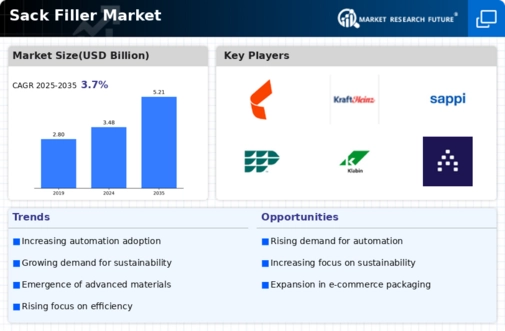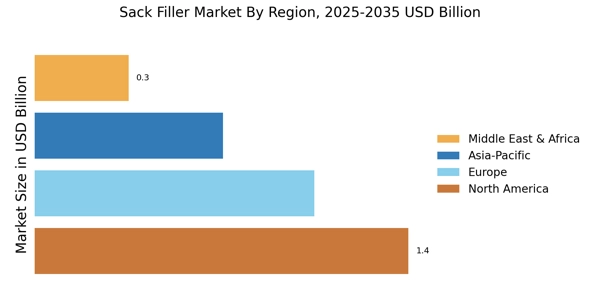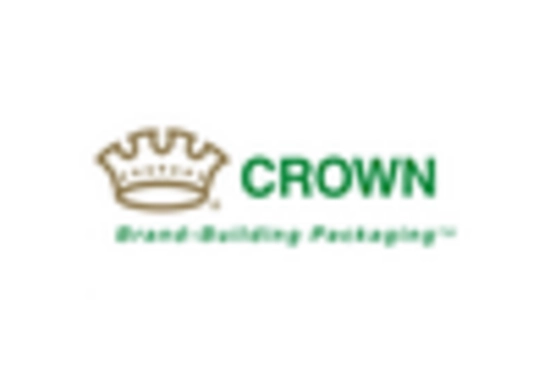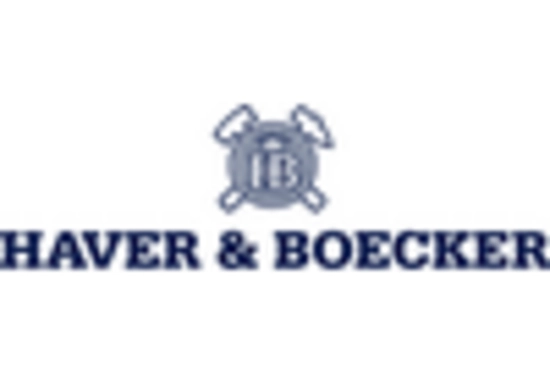Expansion of E-commerce
The Sack Filler Market is significantly influenced by the expansion of e-commerce, which has led to an increased need for efficient packaging solutions. As online shopping continues to rise, companies are seeking effective ways to package and fill products for shipment. The demand for sack fillers that can handle various product types, including bulk goods and consumer items, is on the rise. Recent statistics suggest that e-commerce sales are expected to reach trillions in revenue, further propelling the need for efficient filling solutions. This trend indicates that the Sack Filler Market must adapt to the evolving packaging requirements of e-commerce businesses, thereby driving innovation and growth.
Rising Demand for Automation
The Sack Filler Market is experiencing a notable shift towards automation, driven by the need for increased efficiency and reduced labor costs. Automation technologies, such as robotic sack fillers, are being adopted to streamline operations and enhance productivity. According to recent data, the market for automated filling systems is projected to grow at a compound annual growth rate of approximately 7% over the next five years. This trend indicates that manufacturers are increasingly investing in automated solutions to meet the growing demand for high-speed filling processes. As a result, the Sack Filler Market is likely to witness a transformation in operational dynamics, with automation becoming a key driver of growth.
Growth in Agricultural Sector
The Sack Filler Market is benefiting from the growth in the agricultural sector, which requires efficient packaging solutions for various products such as grains, seeds, and fertilizers. As agricultural production increases to meet the demands of a growing population, the need for effective filling systems becomes more pronounced. Recent reports indicate that the agricultural sector is projected to expand, leading to a higher demand for sack fillers that can handle bulk materials efficiently. This growth presents opportunities for manufacturers to innovate and develop specialized filling equipment tailored to the unique needs of the agricultural industry. Thus, the expansion of agriculture is a key driver for the Sack Filler Market.
Focus on Food Safety Regulations
The Sack Filler Market is increasingly shaped by stringent food safety regulations that necessitate the use of compliant filling equipment. As governments and regulatory bodies enforce stricter guidelines to ensure food safety, manufacturers are compelled to invest in sack fillers that meet these standards. This has led to a surge in demand for advanced filling technologies that can ensure hygiene and prevent contamination. Data indicates that the food and beverage sector is a major contributor to the sack filler market, accounting for a significant share of overall sales. Consequently, the emphasis on food safety is likely to drive innovation and investment in the Sack Filler Market, as companies strive to comply with regulations while maintaining efficiency.
Technological Innovations in Filling Equipment
The Sack Filler Market is witnessing a wave of technological innovations that enhance the efficiency and functionality of filling equipment. Advancements such as smart sensors, IoT integration, and machine learning are being incorporated into sack fillers to optimize performance and reduce downtime. These innovations not only improve the accuracy of filling processes but also enable real-time monitoring and data analysis. As companies seek to enhance operational efficiency, the adoption of these technologies is likely to increase. Market analysis suggests that the integration of advanced technologies could lead to a substantial increase in productivity within the Sack Filler Market, positioning it for sustained growth in the coming years.


















Leave a Comment